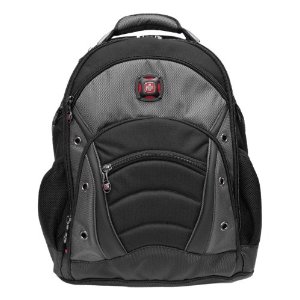 A few years ago, I managed to break both of my feet in the span of about four months. Not the most graceful period of my life. Sigh. Luckily, it wasn’t both feet at the same time, and the left on only required a shoe, not a boot, and not crutches. But the right one, oh, the right one. I was on crutches for three weeks and in a boot up to my knee for a total of six weeks. I was traveling a lot, like normal, and wasn’t able to take a hiatus until my foot healed. So I had to figure out how to get around an airport and other assorted travel related places while on crutches. There wasn’t a lot of info on the internet, so I managed to muddle through on my own. Here are the things I did that made it easier to get around while temporarily handicapped.
A few years ago, I managed to break both of my feet in the span of about four months. Not the most graceful period of my life. Sigh. Luckily, it wasn’t both feet at the same time, and the left on only required a shoe, not a boot, and not crutches. But the right one, oh, the right one. I was on crutches for three weeks and in a boot up to my knee for a total of six weeks. I was traveling a lot, like normal, and wasn’t able to take a hiatus until my foot healed. So I had to figure out how to get around an airport and other assorted travel related places while on crutches. There wasn’t a lot of info on the internet, so I managed to muddle through on my own. Here are the things I did that made it easier to get around while temporarily handicapped.
1) One bag packing. The best way to be completely self sufficient is to carry everything in one bag you can wear. For my trips, I pared down to the bare necessities and managed to get everything into my amazing expandable backpack (a Swiss Gear bag similar to this one. It’s not super pretty but it will pack a ton). If you’re going on a trip longer than two nights, this may be one of the few times I will recommend that you check your bag.
2) Cross-body personal item. I found an inexpensive cross-body purse just for this time period. If a messenger bag works better for you, that’s fine too. A cross-body purse/briefcase/personal item will allow you to move around without banging into your crutches. With my backpack and purse, I was able to crutch around without assistance a lot of the time.
3) Get direct flights. If at all possible, skip the connection. O’Hare is a huge airport that can be difficult to navigate in the best of times, much less when you’re slowed down.
4) Keep tip money handy. If you will end up getting assistance from people, be prepared to tip. Have plenty of $1 bills that you can easily access. If you need a wheelchair (which I did a lot of the time, especially in O’Hare), assume you will be wheeled by several different people—one person from the ticket counter to your gate, another wheel you down the ramp to the plane, another to take you from gate to gate if you have a connection, etc. While they wheel you, your backpack and purse can go on your lap, and you can balance your crutches on the footrest of the wheelchair.
5) Let the airlines know. Most airlines are really good about getting assistance for those who need it. Call your airline and travel agent ahead of time to let them know you will need some extra help. They made sure people met me at each gate and that I got easily accessed seats.
I hope this helps you! Of course, mostly I hope you never break your foot and have to travel, but if it does happen, you’ll be ready to handle it.
Readers, have you ever had to travel injured? What did you do to make it easier?
(And don’t forget about our super exciting contest coming up next week!!!!)



I tore my quadriceps tendon in Ireland – but at the time I did not know what the injury was – all I knew is I could not walk without leaning on something. We saw a doctor but he didn’t know what it was, either. We were at the end of our trip, and just decided to get me home. It was not easy. Luckily, our hotel in Dublin, the last night, gave us a handicap-friendly room, so I could bathe without risking further injury.
What posed a problem was getting around international airports with all those long corridors. My wife supported me in Dublin, but once we got to Gatwick we needed a wheelchair. Once on the plane, I was fine – I could use seat backs to stabilize. At DFW I used a wheelchair to baggage claim (customs) and used a baggage trolley for support.
My wife got the car, and a few days later I had surgery to fix the tendon. 6 weeks of immobilization followed. Had I had the surgery over there, I might have had a hard time getting home.
I am in the third of six months with my right foot in a boot and walking with crutches. As a US Air Chairman level flyer, staying at home was not an option. Fortunately First Class upgrades solve a lot of problems. Helpful flight attendants remain helpful; surly ones remain surly no matter how many feet you are walking on.
Mine is an athletic injury so I view my time on crutches as an athletic challenge. Getting through an airport is just another workout, albeit at times painful. Psychologically I can’t do wheelchairs but they are readily available. The backpack is a must.
This brief sojourn in the land of ADA reveals that PHL remains an airport to be avoided at all costs. Gate 35A/B at DCA is still a free-for-all and the only way to get to the US Air shuttle between the concourses at DCA is those metal stairs. Since moving walkways are out of the question, the trip from one end of Concourse B to the other end of Concourse C at CLT is even longer.
You can take great confidence knowing that you are well-protected by TSA from those who can barely walk. If you are on crutches you can go to the front of the line but what happens when you get there is another story. You will get the full-body pat down which is understandable. You will get the residue screening and since my boot will come off, it is removed and sent through the x-ray.
Now I just go through the regular line, take my boot off, send it through with my backpack and crutches, and hop through screening machine. I can do it faster than most of the casual travelers (who shouldn’t be in the expert traveler lane) and certainly faster than getting TSA’s special treatment for those who can’t walk.
Great info, I got sick while over landing in Africa for 17 weeks. I also got sick scuba diving in South East Asia. I travel full time and it’s funny how I can count on one hand how many times I’ve been sick while traveling. However the minute I’m back into the states I get sick.
I have been handling my disability for many years happily and I have traveled many countries in my wheelchair. It is difficult but not impossible.